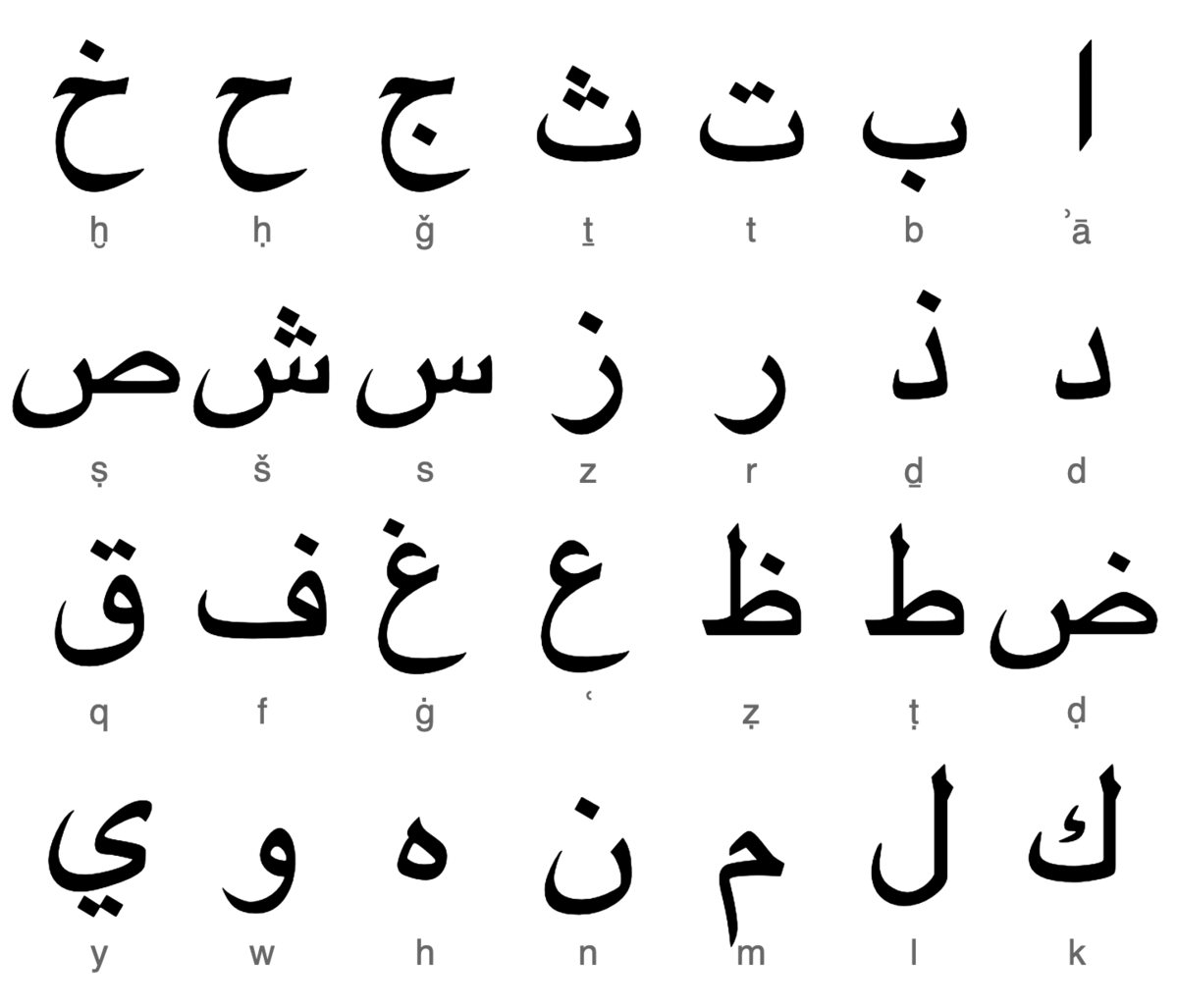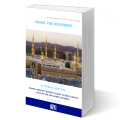
The Arabic language, both written and spoken, carries with it a unique cultural identity that transcends borders and unites nations. Within the tapestry of Arabic, there exists a dazzling array of local dialects that, while distinct, all find their roots in Standard Arabic. Delving into the world of Arabic is akin to opening a door to a mesmerizing range of places and cultures, all shaped by this rich and ancient language.
One common misconception about Arabic is that it presents an insurmountable challenge for learners. However, the reality is far more encouraging. Arabic is not as formidable as it may seem, and its accessibility is one of its hidden treasures.
Arabic is not just another language; it is a gateway to an unexplored world, a vibrant culture, and a unique perspective on history and politics, often overlooked in Western media. Beyond its accessibility, Arabic is in high demand worldwide. Ministries, armed forces, and countless companies are actively seeking individuals proficient in Arabic due to a shortage of qualified speakers. This demand presents compelling reasons for students to consider Arabic as their language of choice.
Arabic is often misunderstood as a single, uniform language. In reality, it encompasses a wide spectrum of dialects and variations, each with its own distinct characteristics. The foundation of these variations is Standard Arabic, the written form that serves as a common thread throughout the Arab world.
At the heart of Arabic lies fus-ha (الفصحى), the standard written language. Fus-ha is deeply intertwined with the Quran and Islamic faith, having undergone minimal change since the Middle Ages. This remarkable continuity enables Arabic learners to explore seventh-century poetry with relative ease, a feat that would be challenging for English speakers attempting to engage with the works of Shakespeare from the 17th century.
While literary Arabic (fus-ha) is indispensable for academic pursuits, reading, writing, and using dictionaries, proficiency in a local dialect is equally essential. Local dialects exhibit significant variations in pronunciation, vocabulary, and grammatical structures across regions. To navigate effectively in real-world situations, such as haggling in a marketplace, understanding and speaking a local dialect is crucial.
To illustrate the diversity of Arabic dialects, consider the simple question, “What is your name?” This question takes on distinct forms in various dialects:
This example underscores the differences in keywords and grammatical structures between dialects, making spoken Arabic a practical starting point for learners.
Dialects also introduce pronunciation variations. For example, the word for “camel” (جمل) in literary Arabic is “Jamal,” while in Egypt, it is “Gamal.” Despite these differences, cultural exchanges between Arabic-speaking countries, such as Egyptian films and Qatari news channel Al Jazeera, foster mutual understanding among speakers of different dialects.
The Arabic language has significantly influenced European heritage, tracing its journey from modern Saudi Arabia to Europe through the conquests of the Islamic Empire. This cultural exchange left a lasting impact on Spanish words and place names. For instance, “Gibraltar” evolved from “Jabal Tariq” (جبل طارق), meaning “The mountain of Tariq.” Similarly, “The Algarve” in Portugal derives from “al-Gharb” (الغرب), translating to “the west.”
Beyond language, Arabic culture played a vital role in shaping modern Europe. Arabic scholars, particularly those at the House of Wisdom in Baghdad, preserved, translated, and advanced texts across various scientific and human disciplines. Thanks to their efforts, many of Aristotle’s texts survived and found their way to Europe, contributing to the Renaissance and the expansion of knowledge.
Arabic, as a Semitic language like Hebrew, challenges Indo-European language learners to adapt to a different linguistic framework. However, Arabic proves to be remarkably accessible at the beginner’s level, boasting straightforward grammar with only two tenses (past and present). The language also eliminates the need for the verb “to be” in the present tense, as it is implied.
A noteworthy feature of Arabic is its logical root letter system, which underpins its verbs and vocabulary. Most Arabic verbs consist of three essential letters, from which numerous nouns and related adjectives can be derived. For instance, from the root letters “k,” “t,” and “b” (ك ت ب), one can generate:
This systematic structure empowers Arabic learners to recognize and decipher new vocabulary efficiently.
The Arabic script, written from right to left, may appear daunting at first glance. However, the process of learning to read and write Arabic is more manageable than many believe. The alphabet comprises 28 letters and begins with familiar elements such as alif (أ), ba (ب), and ta (ت). Unlike Indo-European languages, Arabic does not employ uppercase letters, and short vowels are often omitted.
A minor complexity arises when dealing with numbers in Arabic text, which are read from left to right, similar to English. Over time, learners become proficient at recognizing words in context, reducing the need for diacritical marks. These marks, while available in children’s books and textbooks, primarily serve to distinguish words and avoid ambiguity, particularly in online platforms like Twitter.
The motivations for learning Arabic are as diverse as the language itself. While many Muslims embark on this journey to better understand the Quran, a growing number of individuals pursue Arabic for personal enrichment, academic advancement, or business opportunities. Consequently, there is a thriving market for Arabic language learning materials and resources.
For those eager to explore the world of Arabic, numerous approaches await. Enlisting the guidance of a qualified Arabic language teacher, either through online courses or private tutoring, often proves the most effective method. However, self-guided learning remains a viable option for individuals with the motivation and discipline to succeed.
In conclusion, Arabic is not just a language; it is a journey of discovery, a cultural treasure trove, and a pathway to diverse career opportunities. Its rich history, intricate dialects, and logical structure offer learners a unique linguistic experience that can profoundly impact their personal and professional lives. Whether driven by a love for language, a desire for cultural immersion, or ambitions in international organizations, diplomacy, journalism, tourism, or international business, Arabic stands as a valuable asset that sets individuals apart. So, take the plunge and embark on the mesmerizing journey of Arabic language learning. أهلا وسهلا (Ahlan wa sahlan)! Welcome to the world of Arabic, where your adventure awaits!
The Al-Dirassa Institute provides a range of online courses in Arabic, Quran, and Islam tailored for non-Arabic speakers. To enroll in our courses or learn more, please don’t hesitate to get in touch with us today.
Discover the experiences of our delighted clients who have thoroughly enjoyed utilizing this standout feature.
Alhamdulillah I‘m very pleased with the arabic and Qur’an lessons I receive from teacher Umm Tasneem and I‘m also content with the al-dirassa administration team who were very quick in answering any questions I had. In a month I progressed a lot and I cannot wait to continue my studies with al-dirassa. May Allah reward everyone at al-dirassa.
Verified review - view original
My Qur’an teacher is fantastic, she teaches me in a loving and kind way where I look forward to the lessons and learn so much. My Arabic teacher is equally as nice and has a lot of patience with me, she has great expertise in the field and I’ve progressed really quickly with her. Thank you Al-dirassa!
Verified review - view original
Don’t want to go through the translation anymore?
30 free minutes with your qualified Egyptian teacher.

Al-dirassa Institute offers you a gift to help you begin your journey to being fluent in Arabic and learning the Quran.

Al-dirassa Institute offers you a gift to help you begin your journey to being fluent in Arabic and learning the Quran.